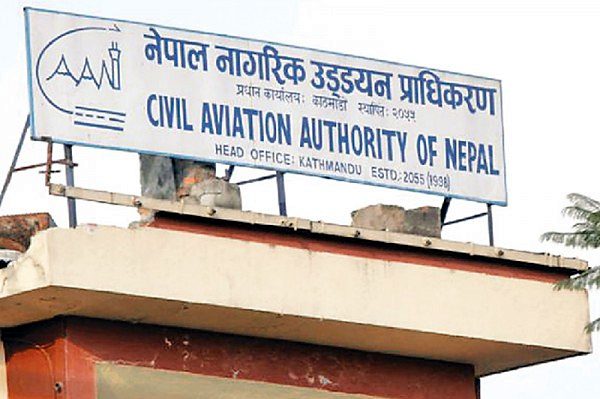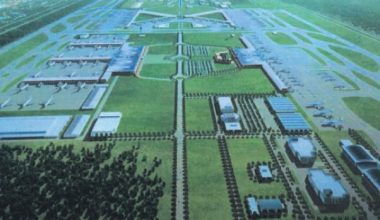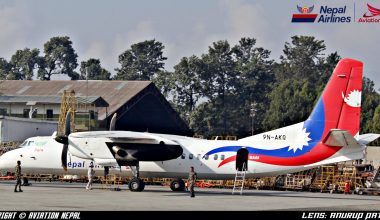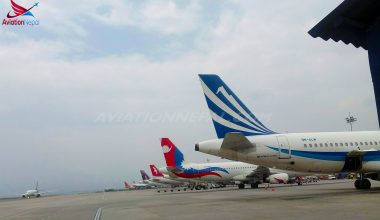
Airport enhancement program, Sanjose Constructora and its termination at the end
December 4, 2016- Sunday
The story started when Government of Nepal requested Asian Development Bank (ADB) to invest the development of Tribhuvan International Airport (TIA) in Kathmandu in accordance with the TIA master plan 2010-2028 under Tribhuvan International Airport Capacity Enhancement Investment Program with a request fund of US$ 240.00 million. As TIA is a key infrastructure to promote the regional connectivity, the capacity enhancement needs of TIA were specifically acknowledged at the Bay of Bengal Initiative for Multi-Sectoral Technical and Economic Cooperation workshop held on 28-29 May 2014 by the participant member countries. The investment program was included in the 2016-2018 Country Operations and Business Plan as a firm lending artifact from ADB in 2017.
As steady annual increase (3-5%) was projected in the air traffic movements in the next 20 years, the position of TIA in close proximity from Kathmandu city center does not allow the TIA to be handled through more proficient use of the accessible areas within the current airport boundary.
Under the circumstances, the Civil Aviation Authority of Nepal (CAAN) prepared a TIA master plan for the infrastructure development in 2010-2028 under ADB aid and, since 2009, ADB had been sustaining the initial phase of the TIA development in accord with the Master Plan through the Air Transport Capacity Enhancement Project (ATCEP).
The project scope of ATCEP included the extension of the northern part of the parallel taxiway to lessen the usage of the runway for taxing purpose, the expansion of the apron areas to accommodate more aircraft in TIA and runway extension of 300m to the southern part of the runway.
In addition to addressing the capacity constraints of TIA, ATCEP also targeted to support the full conformity with international safety standards with the stipulation of air navigation equipment including approach lighting systems. Additional development of airside facilities was planned under the master plan to meet the forecasted demand in 2028 including the taxiway extension to the southern end point of the runway, the relocation of hangers to the eastern part of TIA and the construction of dedicated domestic apron areas.
These infrastructures improvement works aimed at both enhancing the physical capacity of TIA and fully complying with the Standards and Recommended Practices of International Civil Aviation Organization (ICAO) to endorse air traffic safety.
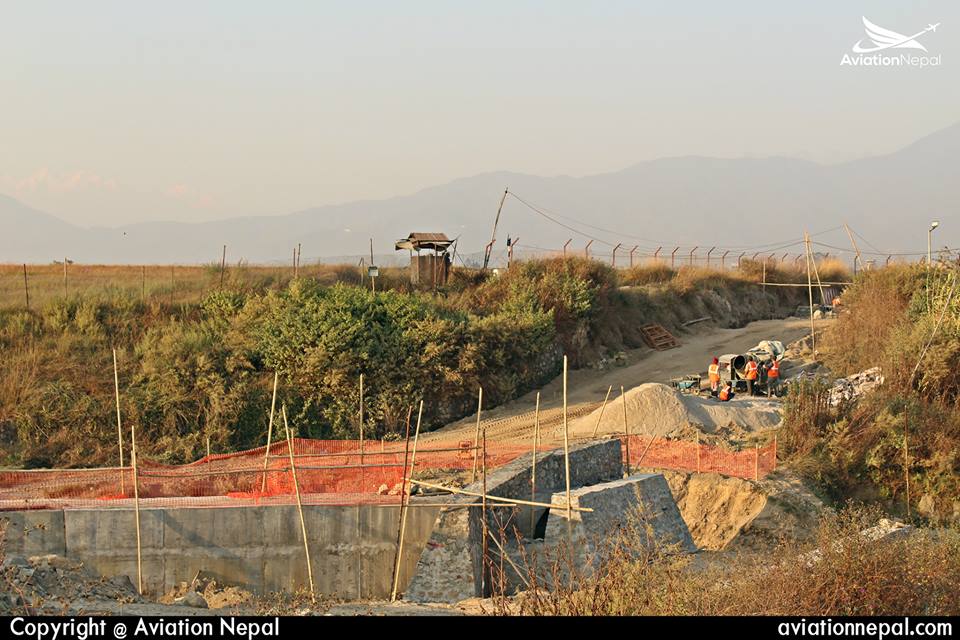
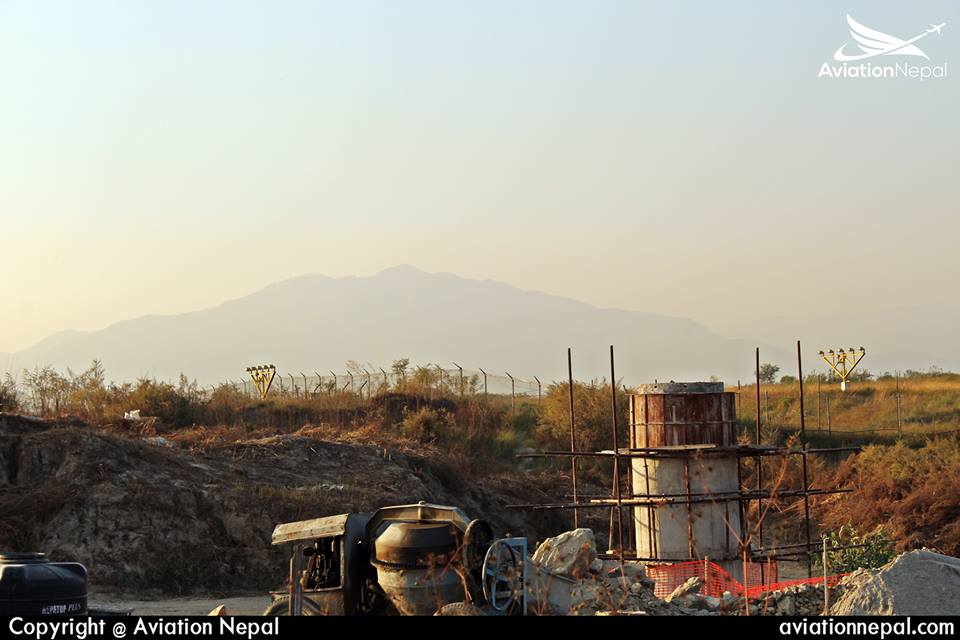
The international terminal building at TIA was looming its design capacity. After the reconfiguration works under ATCEP, the international terminal building could accommodate about 3.0 – 3.9 million passengers, while it handled about 3.1 million international passengers in 2013. It was forecasted that the number of international passengers would reach 5.6 million in 2020 and 8.6 million in 2030.
Construction of a new international terminal building (ITB) was a pending need to meet the escalating air transport passengers. The government was exploring the finest financing scheme for the development of the new international terminal building under either sovereign financing or public-private partnership (PPP) scheme to meet the demand as soon as possible.
In parallel with all these expansion works, the operational efficiency needed to be enhanced to meet the mounting volumes of air traffic. The current TIA building was constructed in 2002 to handle around 1400 passengers at peak hours. A project to expand the airport in 2010 to handle the increase in passenger volume –up to 2460 passenger at peak hours- was still underway and had been extended till 2018 owing to different reasons.
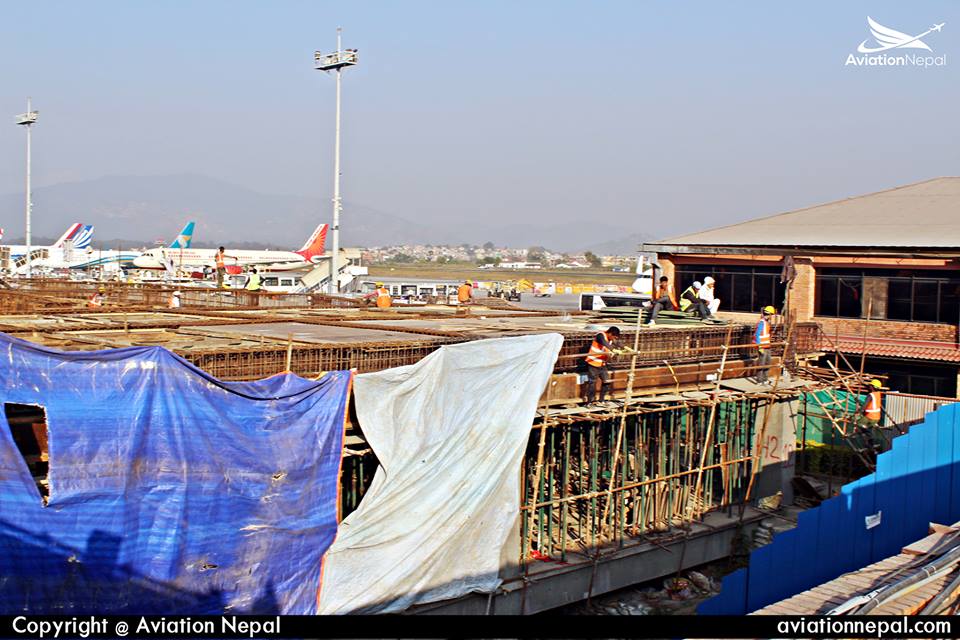
For the next move, Civil Aviation Authority of Nepal (CAAN) decided to reacquire 140 ropanis of land to the east of Tribhuvan International Airport (TIA), eight years after the owners were allowed to build houses on their plots. CAAN’s stir intended at constructing drainage and the airport perimeter besides preventing edifice of houses on the eastern side of the airport due to safety considerations. The area marked for reacquisition is located on the western side of the Jadibuti-Pepsi Cola road. Of the total land proposed to be reacquired, 115 ropanis belonged to locals.
Around September 2015, the TIA General Manager Dewanand Upadhya informed that the long-awaited expansion of Tribhuvan International Airport (TIA) would be commenced from 2016. A French consultancy firm worked on the design of the project which was backed by Rs 60 billion loan and grant from the Asian Development Bank (ADB).
The new airport building was going to be built to the north of the current building. The expanded airport would be spread across 90,000 sq meters and would have parking space for 20 international airplanes and 42 domestic planes.
Six boarding bridges would also be constructed and modern pipelines would be used to fuel airplanes. After the expansion, the airport would be extended to Gaushala in the north and Koteshowr in the south. The current international terminal would be transformed into the domestic terminal after the new airport would be built by 2028.
But till August 2016, only 14 percent of the construction work in the Tribhuvan International Airport (TIA) Expansion Project, which had to be completed by 2016, had been completed till that date. TIA had set a goal of carrying out 80 percent of the work by the end of Fiscal Year 2014/15.
The Spanish contractor — Constructora Sanjose – did for long and cited the unavailability of soil required for the expansion of the runway as the reason. The company had been delaying construction saying that out of 2 million cubic meters of sand required for the expansion, only 400,000 cubic meters was accessible and it could not get remaining 1.6 million cubic meters of soil. But in the contract, it was clearly estimated that the soil queries were available in Jorpati, Duwakot and Besigaun areas. But the contractor had extracted soil from the Pashupati query. After the court’s stay order to not dig the soil from the area, the company stopped working after extracting 400,000 cubic meters of soil.
Then, the expansion work stopped for a few days due to the closure of the airport after the crash-landing of a Turkish Airlines craft, and during the SAARC summit and due to the April earthquake. TIA Improvement Project had already written thrice to the contractor warning it to carry out work and complete it in time but no replies had been received and it had been estimated that it would take at least two years to complete.
The Director-General of the Asian Development Bank (ADB), in its project review meeting held in Kathmandu, had also warned that if the expansion project was halted and work were not completed as per the time given, ADB would terminate the project.
According to Mohan Krishna Sapkota, spokesperson of MoCTCA, the major problems seen in the Spanish company was hiring of local and cheap contractors, the absence of site inspection from the top management and the blaming the court stay order.
Lawmakers had previously highlighted the need for solving the problem with the contractor and completing of work in time. They also urged the concerned authorities to improve services being provided at TIA, to maintain it and to keep it clean and hygienic.
85 percent of the construction work of an underground parking and office complex was but completed.
And, finally, CAAN was all set to miss its completion deadline raising a serious question over the capability of aviation regulatory body, as well as other stakeholders, including the funding agency the Asian Development Bank – that are directly involved in the execution of the project. According to the then latest progress report prepared by the Tribhuvan International Airport Improvement Project Directorate, the three-year-long project worth US$ 80 million, which also exceeded the estimated cost for the construction of second international airport, had made a progress of less than 20 percent while the project completion deadline was about to expire in three months.
The project under the International Competitive Bidding-01 had failed to complete its task on time, as the Spanish contractor – Constructora Sanjose – had not been working for long citing unavailability of construction materials, according to the report and only 30 percent of the total fund had been utilized in more than 80 per cent of the project duration.
According to the report, the overall progress of all components of the ADB-funded Air Transport Capacity Enhancement Project worth US$150 million was just 30 per cent.
Most of the CAAN’s officials admitted that the investment at TIA was made without doing cost-benefit analysis to squander away foreign grant and loan.
There was a high demand to terminate the contract if Sanjose Constructora still did not put right its ways.
The project was estimated to improve TIA’s capacity to handle more than 5.85 million passengers annually by 2015 with the end of project components, such as extension of the runway, construction of new taxiways, extension of the apron, latest lighting in the airfield, restructuring and expansion of the international terminal, installation of new system of carriage of baggage and quite a few civil works and linked facilities.
Out of ADB’s total assistance, US$70 million was provided as loan and US$ 10 million as the grant.
Once all the infrastructure, buildings, and engineering work were completed, TIA was to allow landing of bigger aircraft and tonnage while its apron would lodge around 20 Boeing 757 aircraft, according to the project document.
The Project handled by Civil Aviation Authority of Nepal (CAAN) and contracted by a Spanish company- Sanjose had been able to achieve 16 per cent of progress so far.
The Gorkha Earthquake and its repercussions as well as the border blockade imposed by India, are also said to have contributed to the delay in the Project that was to be completed by mid-October this year.
Of the total budget estimated for the Project, Rs 90 million had been spent for expanding the international terminal building and constructing remote Parking area-both of which are under the progress.
The construction of remote Parking estimated worth Rs 340 million was already in the offing and would be completed in 18 months.
Amid this, the Commission for Investigation of Abuse of Authority has issued the directive to the concerned authority thrice while the National Vigilance Centre and the Office of Prime Minister and Council of Ministers have repeatedly alerted to complete the Project on time but none of the directives have been implemented.
Questions on the progress of the Project have been raised in the International Relations and Labour Committee under the Legislature-Parliament too.
Secretary at the Ministry of Culture, Tourism and Civil Aviation Prem Kumar Rai stated that by adopting a new measure for the Project, the Project cost would rise to 12 billion.
He added that the Project would be further delayed by doing so. Hence Secretary Rai spoke of the need to continue with the current contractor but pressed for pace for the Project.

Civil Aviation Authority of Nepal (CAAN) on Friday decided to terminate a contract with Constructora Sanjose after the Spanish firm failed to complete a multi-million dollar project at the Tribhuvan International Airport within the stipulated deadline.
With the termination of the main contractor, uncertainty circles large over the future of the Asian Development Bank-funded mega project.
A meeting of the CAAN’s board of directors headed by Minister for Culture, Tourism and Civil Aviation Jiban Bahadur Shahi on Friday late evening confirmed to expel Sanjose from executing the TIA Improvement Project worth USD 80 million.
CAAN will provide a formal notice to Sanjose on Sunday and also invite a new tender within 15 days. A three-page justification was presented at the board meeting to terminate Sanjose.
CAAN’s board has come to a conclusion to end the contract after Constructora Sanjose SA Spain had proposed its financial claim of Rs1.17 billion and extension of time for 897 days.
The project’s construction supervisor Japan Airport Consultant in association with GEOCE, however, had given only 596 days of extension of time to the project setting a new completion deadline for October 31, 2017.
According to the latest progress report prepared by TIA-IP, the project under the International Competitive Bidding-01 could make a progress of less than 18 percent while missing the completion deadline.
After re-inviting tender, the cost of the project would increase by nearly Rs 1 billion, according to a source close to the TIA-IP.
The Spanish firm delayed the project citing several reasons including the nonavailability of raw materials.
Since the funding agency was fully involved in each and every step to award the contract to Sanjose, it was the sole responsibility of the ADB to pay any compensation, if claimed by the party through arbitration or any other means, a senior CAAN director claimed.
The only work that the construction company completed was that of the laying the conveyor belts after refusing to continue the installation of the belts, violating a component of the project worth $4.2 million.
Through all the turmoil, the development project which was decisive and important has been stopped and got messed which had just started getting pace again about four months ago, it’s still confusing on who to blame and what actually happened that led the construction to get delayed. If the project had been completed, there would have been rather a great change in the way the airport functions now with its congestion in parking and taxing and landing and taking off haphazardly. Now, again through another process, the project will be handed over to other construction company which can take few more years and it’s not impossible that the project would be halted completely.

